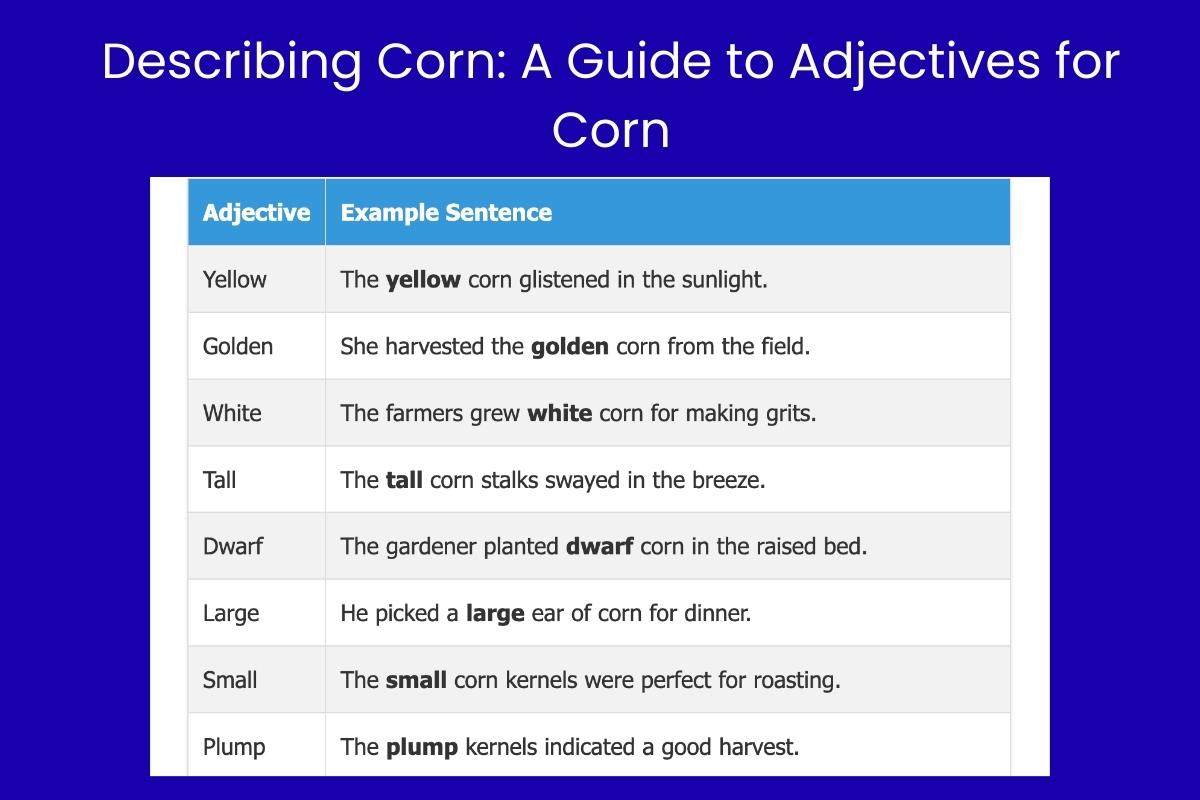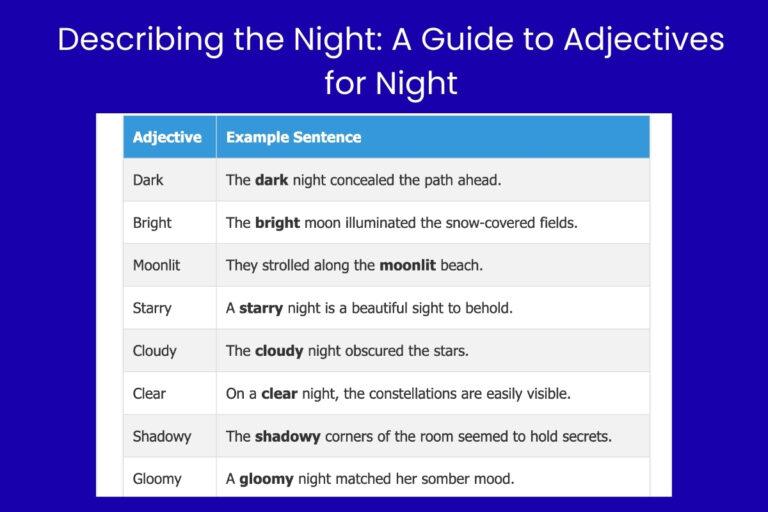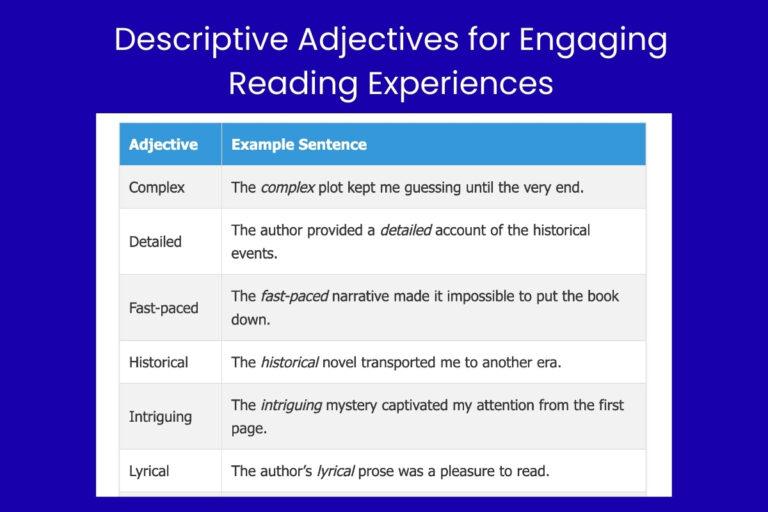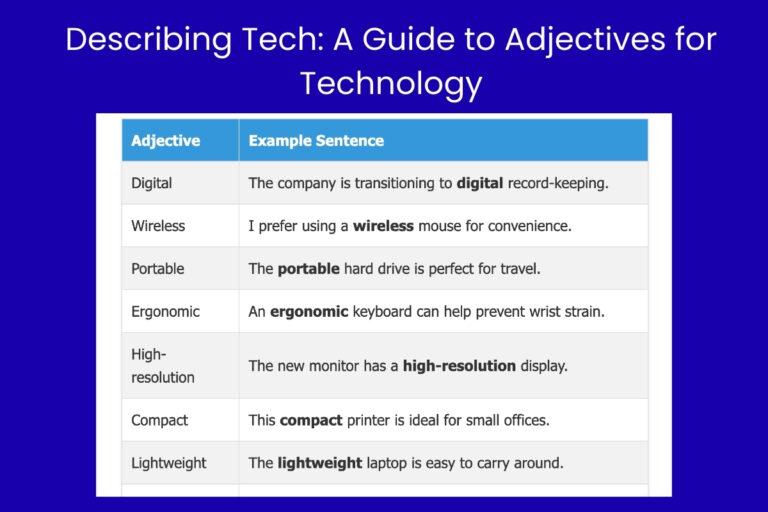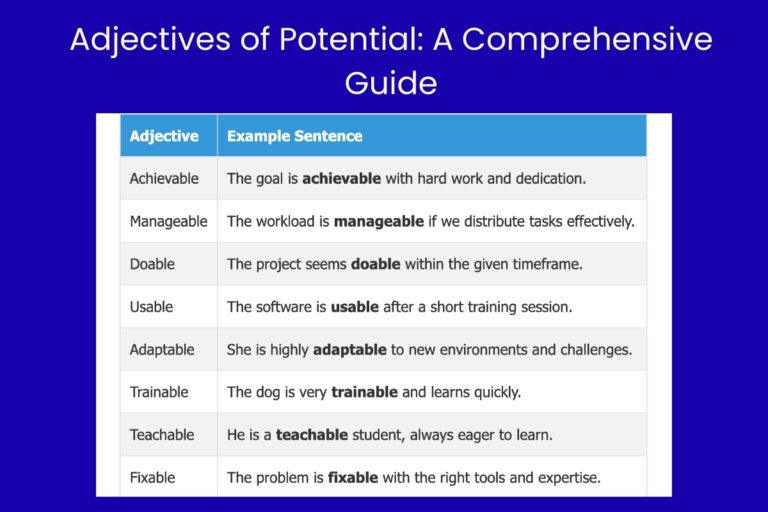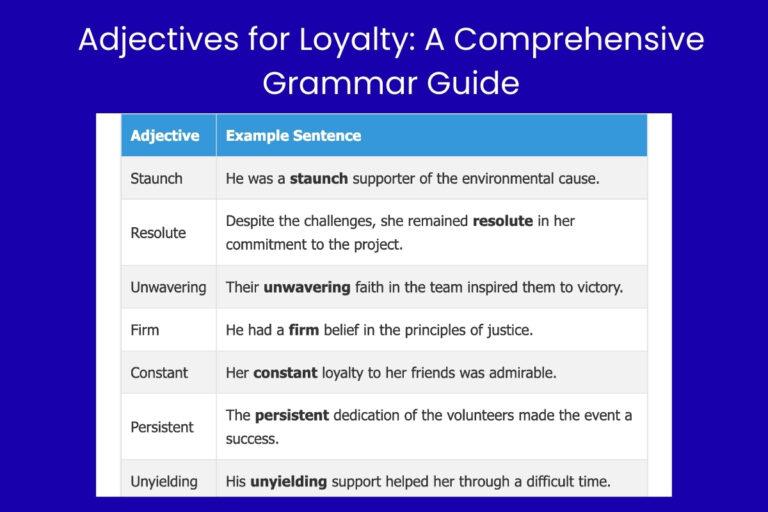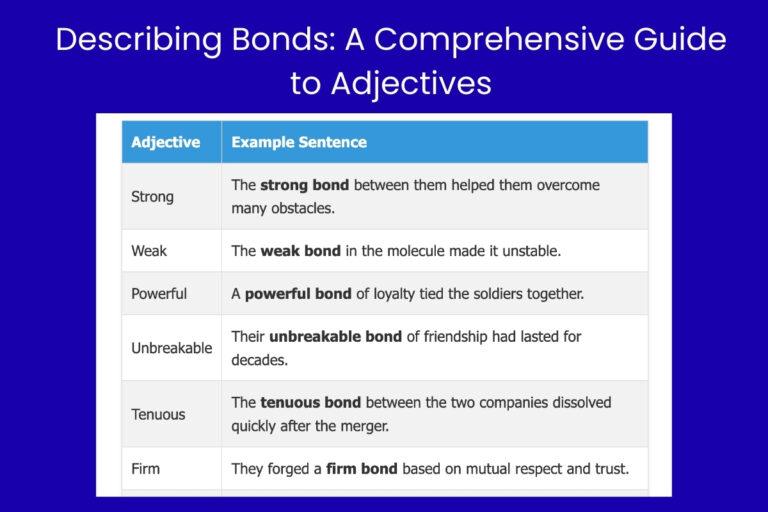Describing Corn: A Guide to Adjectives for Corn
Corn, a staple food in many cultures, is more than just a simple grain. It’s a versatile ingredient with a rich history and a wide range of characteristics. Understanding how to describe corn effectively using adjectives can enhance your writing, whether you’re crafting a culinary masterpiece, writing a scientific report, or simply engaging in everyday conversation. This article provides a comprehensive guide to using adjectives to describe corn, covering various aspects from its appearance and taste to its uses and cultural significance. This guide is perfect for students, writers, food enthusiasts, and anyone looking to expand their vocabulary related to this essential grain.
By mastering the art of using adjectives to describe corn, you’ll be able to paint vivid pictures with your words and communicate more effectively about this important food source. Let’s dive in and explore the world of corn adjectives!
Table of Contents
- Introduction
- What are Adjectives?
- Adjective Structure
- Types of Adjectives for Corn
- Examples of Adjectives for Corn
- Usage Rules for Adjectives
- Common Mistakes with Adjectives
- Practice Exercises
- Advanced Topics
- Frequently Asked Questions
- Conclusion
What are Adjectives?
Adjectives are words that describe or modify nouns or pronouns. They provide additional information about the qualities, characteristics, or attributes of the nouns they modify. In essence, adjectives add detail and specificity to our language, allowing us to create more vivid and descriptive sentences. Adjectives answer questions like “What kind?”, “Which one?”, “How many?”, or “How much?” about the noun they modify.
For example, in the phrase “yellow corn,” the word “yellow” is an adjective that describes the color of the corn. Without the adjective, we would only know that it is corn, but with the adjective, we gain a clearer picture of its appearance. Adjectives are essential for effective communication, as they help us convey precise and nuanced meanings.
In the English language, adjectives typically precede the noun they modify (e.g., “sweet corn”), but they can also follow a linking verb (e.g., “The corn is sweet”). Understanding the function and placement of adjectives is crucial for writing clear and grammatically correct sentences. Adjectives are also used in comparative and superlative forms to show degrees of comparison (e.g., “sweeter corn,” “the sweetest corn”).
Adjective Structure
The structure of adjectives is relatively simple in English. Most adjectives are single words, such as “ripe,” “fresh,” or “tall.” However, adjectives can also be formed from other parts of speech through the addition of suffixes. For example, the noun “silk” can be turned into the adjective “silky” by adding the suffix “-y.” Similarly, the verb “roast” can become the adjective “roasted” by adding the suffix “-ed.”
Adjectives can also be part of compound words, where two or more words are combined to create a single adjective. For example, “sun-dried” is a compound adjective that describes something dried in the sun. These compound adjectives often provide more specific and detailed descriptions than single-word adjectives.
Another important aspect of adjective structure is the use of comparative and superlative forms. These forms are used to compare the qualities of two or more nouns. The comparative form is typically created by adding “-er” to the end of the adjective (e.g., “sweeter”) or by using the word “more” before the adjective (e.g., “more delicious”). The superlative form is created by adding “-est” to the end of the adjective (e.g., “sweetest”) or by using the word “most” before the adjective (e.g., “most delicious”). These forms allow us to express degrees of comparison and highlight the relative qualities of different items.
Types of Adjectives for Corn
Adjectives can be categorized into different types based on their function and the kind of information they provide. Understanding these different types can help you choose the most appropriate adjectives to describe corn in various contexts.
Descriptive Adjectives
Descriptive adjectives, also known as qualitative adjectives, describe the qualities or characteristics of a noun. They provide information about color, size, shape, texture, and other attributes. These are perhaps the most common type of adjective used to describe corn.
Examples of descriptive adjectives for corn include: yellow, sweet, large, tender, juicy, golden, buttery, fresh, succulent, and plump. These adjectives help to create a vivid picture of the corn in the reader’s mind.
Quantitative Adjectives
Quantitative adjectives indicate the quantity or amount of a noun. They answer the question “How many?” or “How much?” These adjectives are useful for describing the yield or amount of corn.
Examples of quantitative adjectives for corn include: much, little, many, few, several, abundant, ample, some, enough, and tons. These adjectives provide information about the quantity of corn being discussed.
Proper Adjectives
Proper adjectives are formed from proper nouns and are always capitalized. They describe something related to a specific place, person, or thing. These adjectives can be used to describe the origin or type of corn.
Examples of proper adjectives for corn include: Mexican (corn), American (corn), Peruvian (corn), Inca (corn), Iowa (corn), and Sweet (corn). These adjectives indicate the origin or specific variety of the corn.
Demonstrative Adjectives
Demonstrative adjectives indicate which noun is being referred to. They include words like “this,” “that,” “these,” and “those.” These adjectives help to specify which corn is being discussed.
Examples of demonstrative adjectives for corn include: this (corn), that (corn), these (corn), and those (corn). These adjectives help to distinguish between different groups or individual ears of corn.
Possessive Adjectives
Possessive adjectives indicate ownership or possession. They include words like “my,” “your,” “his,” “her,” “its,” “our,” and “their.” These adjectives are used to show who or what the corn belongs to.
Examples of possessive adjectives for corn include: my (corn), your (corn), his (corn), her (corn), its (corn), our (corn), and their (corn). These adjectives indicate who owns or is associated with the corn.
Interrogative Adjectives
Interrogative adjectives are used to ask questions about nouns. They include words like “which,” “what,” and “whose.” These adjectives are used to inquire about specific aspects of the corn.
Examples of interrogative adjectives for corn include: which (corn), what (corn), and whose (corn). These adjectives are used to ask questions about the type, characteristics, or ownership of the corn.
Examples of Adjectives for Corn
To further illustrate the use of adjectives for corn, let’s explore various examples categorized by the aspect of corn they describe.
Adjectives Describing Appearance
These adjectives focus on the visual characteristics of corn, such as its color, size, and overall appearance.
The following table provides examples of appearance-related adjectives used to describe corn in a sentence.
| Adjective | Example Sentence |
|---|---|
| Yellow | The yellow corn glistened in the sunlight. |
| Golden | She harvested the golden corn from the field. |
| White | The farmers grew white corn for making grits. |
| Tall | The tall corn stalks swayed in the breeze. |
| Dwarf | The gardener planted dwarf corn in the raised bed. |
| Large | He picked a large ear of corn for dinner. |
| Small | The small corn kernels were perfect for roasting. |
| Plump | The plump kernels indicated a good harvest. |
| Silky | The silky tassels waved atop the corn stalks. |
| Shiny | The shiny kernels looked appealing. |
| Erect | The erect corn stalks stood tall in the field. |
| Drooping | The drooping corn leaves signaled a need for water. |
| Striped | The striped corn was a unique variety. |
| Colorful | The colorful corn was used for decoration. |
| Vibrant | The vibrant yellow hue of the corn was striking. |
| Pale | The pale corn indicated it wasn’t quite ripe. |
| Robust | The robust corn stalks could withstand strong winds. |
| Healthy | The healthy corn plants promised a bountiful yield. |
| Uniform | The uniform size of the corn kernels made it ideal for processing. |
| Uneven | The uneven rows of corn showed the field needed more care. |
| Mature | The mature corn was ready for harvest. |
| Immature | The immature corn needed more time to ripen. |
Adjectives Describing Taste
These adjectives describe the flavor and taste qualities of corn, providing a sensory experience through language.
The following table provides examples of taste-related adjectives used to describe corn in a sentence.
| Adjective | Example Sentence |
|---|---|
| Sweet | The sweet corn was a summer delicacy. |
| Buttery | The buttery flavor of the corn on the cob was irresistible. |
| Savory | The savory corn chowder was perfect for a chilly evening. |
| Mild | The mild taste of the corn made it versatile for many dishes. |
| Starchy | The starchy corn was used to make tortillas. |
| Nutty | The nutty flavor of roasted corn was delightful. |
| Earthy | The earthy taste of the corn reflected its natural origins. |
| Delicious | The delicious corn bread was a family favorite. |
| Flavorful | The flavorful corn salsa was a hit at the party. |
| Bland | The bland corn needed some seasoning. |
| Rich | The rich taste of corn pudding was comforting. |
| Tangy | The tangy pickled corn added a zing to the meal. |
| Smoky | The smoky grilled corn was a barbecue staple. |
| Sugary | The sugary kernels burst with sweetness. |
| Fresh | The fresh corn tasted like summer. |
| Watery | The watery corn lacked flavor. |
| Pleasant | The pleasant taste of the corn was refreshing. |
| Delicate | The delicate flavor of the corn was enhanced by the spices. |
| Natural | The natural sweetness of the corn was unmistakable. |
| Artificial | The artificial corn flavoring tasted nothing like the real thing. |
| Subtle | The subtle corn flavor complemented the beans. |
| Intense | The intense corn taste was almost overpowering. |
Adjectives Describing Texture
These adjectives describe the physical feel of corn, such as its tenderness, chewiness, or crispness.
The following table provides examples of texture-related adjectives used to describe corn in a sentence.
| Adjective | Example Sentence |
|---|---|
| Tender | The tender corn melted in my mouth. |
| Chewy | The chewy corn kernels provided a satisfying bite. |
| Crisp | The crisp corn chips were perfect for dipping. |
| Soft | The soft corn tortillas were easy to roll. |
| Firm | The firm corn on the cob was cooked just right. |
| Creamy | The creamy corn soup was a winter favorite. |
| Juicy | The juicy kernels burst with flavor. |
| Dry | The dry corn needed more moisture. |
| Smooth | The smooth corn pudding was a delight. |
| Rough | The rough corn husks protected the kernels. |
| Gritty | The gritty cornmeal was used for polenta. |
| Fibrous | The fibrous corn silks were removed before cooking. |
| Pulpous | The pulpous corn kernels were perfect for creamed corn. |
| Tough | The tough corn kernels were hard to chew. |
| Delicate | The delicate texture of the corn was easily ruined by overcooking. |
| Coarse | The coarse cornmeal was used for breading. |
| Fine | The fine corn flour was used for thickening sauces. |
| Velvety | The velvety corn bisque was a luxurious treat. |
| Silky | The silky texture of the corn pudding was remarkable. |
| Grainy | The grainy texture of the corn bread was rustic. |
| Moist | The moist corn cake was delicious. |
| Hard | The hard kernels need to be ground down. |
Adjectives Describing Origin
These adjectives specify the geographical or cultural origin of the corn.
The following table provides examples of origin-related adjectives used to describe corn in a sentence.
| Adjective | Example Sentence |
|---|---|
| Mexican | The Mexican corn was used to make tamales. |
| American | The American corn is a staple crop. |
| Peruvian | The Peruvian corn has large kernels. |
| Iowa | The Iowa corn fields stretched for miles. |
| Sweet | Sweet corn is a popular summer treat. |
| Native | The native corn varieties are well-adapted to the local climate. |
| Local | The local corn was fresher than anything from the supermarket. |
| Imported | The imported corn was more expensive. |
| Hybrid | The hybrid corn varieties yielded more per acre. |
| Organic | The organic corn was grown without pesticides. |
| Genetically modified | The genetically modified corn was resistant to pests. |
| Heirloom | The heirloom corn varieties had unique characteristics. |
| Traditional | The traditional corn dishes were passed down through generations. |
| Regional | The regional corn varieties varied from state to state. |
| Rural | The rural corn fields were a common sight. |
| Coastal | The coastal corn varieties were salt-tolerant. |
| Mountain | The mountain corn varieties were hardy. |
| Southern | The Southern corn bread was a classic dish. |
| Northern | The Northern corn varieties matured quickly. |
| Eastern | The Eastern corn crops suffered from drought. |
| Western | The Western corn farmers used irrigation. |
| Global | The global corn trade is a major industry. |
Adjectives Describing Use
These adjectives describe how the corn is used, whether for food, animal feed, or industrial purposes.
The following table provides examples of use-related adjectives used to describe corn in a sentence.
| Adjective | Example Sentence |
|---|---|
| Food | The food corn was destined for the market. |
| Feed | The feed corn was used for livestock. |
| Industrial | The industrial corn was processed into ethanol. |
| Pop | The pop corn was perfect for movie night. |
| Sweet | The sweet corn was sold at the farmers market. |
| Grinding | The grinding corn was used to make cornmeal. |
| Roasting | The roasting corn had a delicious smoky flavor. |
| Canning | The canning corn was preserved for winter. |
| Fresh | The fresh corn was a summer treat. |
| Dried | The dried corn was stored for later use. |
| Milling | The milling corn was processed into flour. |
| Cooking | The cooking corn was versatile in many dishes. |
| Baking | The baking corn was used in breads and cakes. |
| Frying | The frying corn was made into fritters. |
| Steaming | The steaming corn retained its nutrients. |
| Fermented | The fermented corn was used to make beverages. |
| Processed | The processed corn was used in many packaged foods. |
| Whole | The whole corn kernels were nutritious. |
| Refined | The refined corn products lacked fiber. |
| Animal | The animal corn feed was affordable. |
| Human | The human corn consumption was high. |
| Exported | The exported corn helped boost the economy. |
Usage Rules for Adjectives
Using adjectives correctly involves understanding their placement, order, and the appropriate forms to use in different contexts. These rules ensure clarity and grammatical accuracy in your writing.
Adjective Order
When using multiple adjectives to describe a noun, they generally follow a specific order. This order is not a strict rule, but it is a common convention that helps to make sentences sound more natural. The general order of adjectives is:
- Opinion
- Size
- Age
- Shape
- Color
- Origin
- Material
- Purpose
For example, instead of saying “a yellow small sweet corn,” you would say “a delicious small yellow corn.” Here, “delicious” is an opinion, “small” is size, and “yellow” is color.
Here are some examples of adjective order in sentences describing corn:
- A delicious large yellow corn.
- A fresh local sweet corn.
- A beautiful tall green corn plant.
Comparative and Superlative Forms
Adjectives can be used to compare two or more nouns. The comparative form is used to compare two nouns, while the superlative form is used to compare three or more nouns.
For most short adjectives (one or two syllables), the comparative form is created by adding “-er” to the end of the adjective, and the superlative form is created by adding “-est.” For longer adjectives (three or more syllables), the comparative form is created by using “more” before the adjective, and the superlative form is created by using “most.”
Examples:
- Sweet: sweeter, sweetest
- Large: larger, largest
- Delicious: more delicious, most delicious
Here are some examples of comparative and superlative adjectives used to describe corn:
- This corn is sweeter than that corn.
- This is the sweetest corn I have ever tasted.
- This corn is more flavorful than the other corn.
- This is the most flavorful corn in the market.
Articles with Adjectives
When using adjectives, it’s important to use the correct articles (“a,” “an,” “the”) before the adjective and noun. The choice of article depends on whether the noun is specific or general and whether the adjective begins with a vowel sound or a consonant sound.
- Use “a” before adjectives that begin with a consonant sound: a sweet corn, a yellow corn.
- Use “an” before adjectives that begin with a vowel sound: an excellent corn, an unusual corn.
- Use “the” when referring to a specific corn: the sweet corn I bought yesterday, the yellow corn in the field.
Here are some more examples:
- I bought a sweet corn at the market.
- She cooked an excellent corn dish for dinner.
- The yellow corn was ready for harvest.
Common Mistakes with Adjectives
Even experienced writers sometimes make mistakes with adjectives. Being aware of these common errors can help you avoid them in your own writing.
Here are some common mistakes with adjectives and how to correct them:
| Incorrect | Correct | Explanation |
|---|---|---|
| A sweet yellow small corn | A delicious small yellow corn | Adjective order is incorrect. Opinion should come before size and color. |
| This corn is more sweeter than that one. | This corn is sweeter than that one. | Do not use “more” with adjectives that already have “-er” ending. |
| The most sweetest corn. | The sweetest corn. | Do not use “most” with adjectives that already have “-est” ending. |
| I like corn sweet. | I like sweet corn. | Adjective should come before the noun. |
| Corns are yellow. | The corn is yellow. | Use the singular form “corn” when referring to the general concept. |
| Good corn. | Delicious corn. | “Good” is a general term. Use a more specific adjective for better description. |
| An yellow corn. | A yellow corn. | Use “a” before adjectives that start with a consonant sound. |
| More tastier corn. | Tastier corn. | Avoid double comparatives. |
| Most perfect corn. | Perfect corn. | “Perfect” is an absolute adjective and doesn’t need comparison. |
Practice Exercises
Test your understanding of adjectives for corn with the following exercises. Choose the best adjective to complete each sentence.
Exercise 1: Choose the correct adjective.
| Question | Options | Answer |
|---|---|---|
| 1. The ______ corn was perfect for grilling. | a) sweet b) sweetly c) sweetness | a) sweet |
| 2. This is the ______ corn I’ve ever tasted. | a) tastier b) tastiest c) taste | b) tastiest |
| 3. The ______ corn fields stretched for miles. | a) tall b) taller c) tallest | a) tall |
| 4. She bought ______ corn at the market. | a) a fresh b) an fresh c) the fresh | a) a fresh |
| 5. The ______ corn kernels were used for making polenta. | a) gritty b) grit c) grittier | a) gritty |
| 6. What ______ corn is best for making tortillas? | a) kind b) kinder c) kindest | a) kind |
| 7. The ______ corn had a buttery flavor. | a) cook b) cooked c) cooking | b) cooked |
| 8. This ______ corn is grown without pesticides. | a) organic b) organically c) organics | a) organic |
| 9. The ______ corn are ready to be harvested. | a) mature b) maturity c) maturing | a) mature |
| 10. I prefer ______ corn over canned corn. | a) fresh b) fresher c) freshest | a) fresh |
Exercise 2: Rewrite the sentences using more descriptive adjectives.
| Question | Answer |
|---|---|
| 1. The corn was good. | The delicious sweet corn was a summer treat. |
| 2. The corn field was big. | The vast tall corn field stretched as far as the eye could see. |
| 3. The corn was yellow. | The corn was a vibrant golden yellow. |
| 4. The kernels were soft. | The kernels were tender and juicy. |
| 5. It was corn bread. | It was flavorful homemade corn bread. |
| 6. I ate the corn. | I devoured the buttery grilled corn. |
| 7. They grew some corn. | They grew abundant organic corn. |
| 8. It is corn. | It is nutritious corn. |
| 9. The corn tasted good. | The corn tasted wonderfully sweet. |
| 10. This is my corn. | This is my prized corn. |
Advanced Topics
For advanced learners, exploring figurative language and idiomatic expressions related to corn can add depth to your understanding and usage of adjectives.
Figurative Language with Corn Adjectives
Figurative language uses words or expressions with a meaning that is different from the literal interpretation. This includes metaphors, similes, and personification. When describing corn, these techniques can add richness and creativity to your writing.
Examples:
- Metaphor: The corn field was a golden sea.
- Simile: The corn kernels were as plump as jewels.
- Personification: The tall corn stalks danced in the wind.
Idiomatic Expressions with Corn
Idiomatic expressions are phrases whose meanings cannot be understood from the literal meanings of the individual words. While there aren’t many common idioms specifically about corn, understanding how corn is used in general expressions can be helpful.
Examples:
- “Corny”: Meaning something that is cheesy or overly sentimental. Example: That joke was a little
little corny.
Frequently Asked Questions
What are some adjectives to describe the sound of corn being harvested?
Adjectives like “rustling,” “crackling,” and “swishing” can describe the sound of corn being harvested.
How can I describe corn in a creative writing piece?
Use vivid descriptive adjectives and figurative language such as metaphors and similes to paint a picture of the corn in the reader’s mind.
What are some adjectives to describe different types of corn, like popcorn or sweet corn?
“Pop” can describe popcorn, while “sweet” describes sweet corn. Other adjectives can describe their texture or flavor, such as “fluffy” for popcorn or “buttery” for sweet corn.
Can adjectives be used to describe the nutritional value of corn?
Yes, adjectives like “nutritious,” “wholesome,” “fiber-rich,” and “vitamin-packed” can be used to describe the nutritional value of corn.
How do I avoid overusing adjectives when describing corn?
Choose adjectives carefully and use them sparingly. Focus on using the most impactful adjectives that convey the most important qualities of the corn. Vary your sentence structure and use strong verbs to add detail without relying too heavily on adjectives.
Conclusion
Mastering the use of adjectives to describe corn can greatly enhance your ability to communicate effectively and creatively. By understanding the different types of adjectives, their usage rules, and common mistakes to avoid, you can paint vivid pictures with your words and convey precise meanings. Whether you’re describing the appearance, taste, texture, origin, or use of corn, the right adjectives can make all the difference.
Continue to practice and expand your vocabulary, and you’ll be well-equipped to describe this versatile and important grain in any context. Happy writing!
